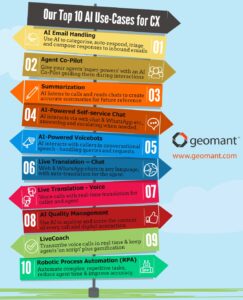The online education marketplace has been in a state of almost consistent growth for some time now. For years, students have turned to online learning as a flexible and convenient way to gain new skills. Unlike traditional schools and learning institutions, online environments promise a more flexible, personalized approach to education. Online, people can attend classes regardless of their location.
According to Research and Marketers, the online education market is set to reach a value of $319.167 billion in 2025, almost doubling from its value in 2019. The pandemic, and the new challenges it introduced for educational environments, has accelerated the rise of this new environment.
Now, more people than ever before are searching for education online, and as a result, educators are having to reconsider the way they serve their students.
Transforming Customer Support in Education
Though the educational environment was one of the first to adapt to the challenges of the pandemic, it’s often fallen behind other industries in terms of the customer experience. Many schools have struggled to keep up with changing demands in the customer service landscape, with many still relying on direct mail and email to connect rather than instant chat or messaging.
Following the pandemic, the rise of online learning will mean students have more opportunities to learn from wherever they choose across the globe. As enrollment levels among schools continue to dwindle, educational facilities will need to upgrade their customer service strategy to compete with other global institutions.
The Trends Shaping the Future of Customer Support in Education
Now that students have grown accustomed to the fast-paced, convenient, and data-driven experiences they can access online, new expectations will emerge around the service provided by educational groups. Students will be looking for personalized experiences, adapted to suit their communication styles. This will pave the way for new omnichannel environments for things like face-to-face video conferencing discussions and SMS messaging.
At the same time, educational facilities will need to adapt to suit changes in the way students demand customer service. New contact center initiatives will need to be implemented to track potential periods of peak demand and prepare the CX environment for heavy enrollment sessions.
Other trends likely to emerge in the student customer experience space include:
- The rise of AI: AI in student customer service will help with collecting information about students, while also offering another level of customer support. FAQ bots and virtual assistants will be able to handle frequently asked questions with speed.
- Translation tools: Supporting international students will require real-time translation tools and access to customer service representatives from other parts of the world. This will require more schools to invest in flexible, cloud-based contact centers.
- Collaboration: Using collaborative tools like Microsoft Teams will help to bring team members together in the back end, so they can collaborate more effectively on enhanced student service. The use of these tools can also save money and keep conversations aligned in a shared space.
Preparing for a New Era of Student Customer Service
The educational environment, just like many industries in the current landscape, is evolving to suit the needs of a changing marketplace. To suit the needs of today’s students, educational facilities need to make sure they have the right technology on hand.
A flexible environment for customer service that unifies multiple channels, keeps team members connected, and paves the way for innovation through AI and analytics will be essential to the future of student CX. Contact Geomant today to find out how we can help you support the students of tomorrow.











